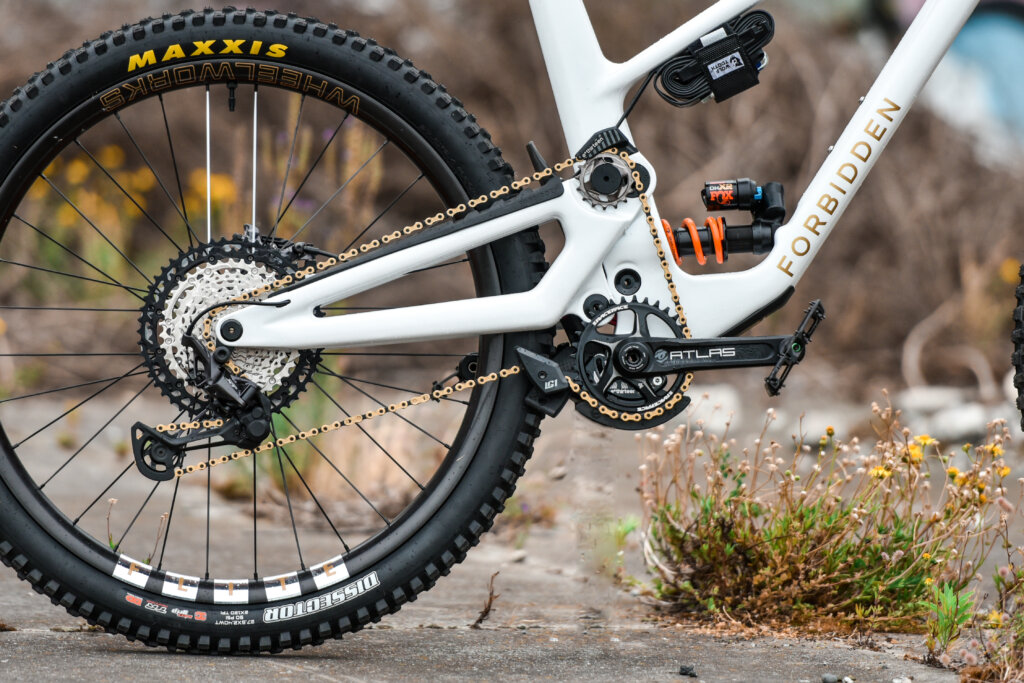Choosing the right pedals for mountain biking is a significant decision that can influence your riding style, comfort, and performance on the trails. In the world of mountain biking, two main types of pedals are widely used: flat pedals and clipless pedals. Each type offers distinct advantages and challenges, making the choice between them more about personal preference, riding style, and what you aim to achieve on your rides.
We understand it can be hard to know what’s going to work best for you, so here’s an overview to guide you through the decision-making process by exploring both flat and clipless pedals in a bit more detail.
Flat pedals
Flat pedals are characterised by a broad platform that supports the entire foot, adorned with pins that grip the sole of your shoe to prevent slipping. They are the most traditional type of pedal and are favoured by many riders for their simplicity and ease of use.
Advantages:
Ease of us: Flat pedals are straightforward to use, making them an excellent choice for beginners. They allow for quick foot removal and replacement, crucial for maintaining balance in tricky sections or during a fall.
Flexibility: With flat pedals, you can wear any shoe, although specific mountain biking shoes offer better grip and comfort. This flexibility is perfect for those who prefer not to invest in additional cycling shoes or for riders who use their bike for casual rides as well as off-road adventures.
Skill development: Riding with flat pedals can enhance your technical riding skills. Without the security of being attached to the pedal, you learn to maintain correct foot positioning and improve your balance and bike handling skills.
Challenges:
Foot slippage: One of the primary concerns with flat pedals is the potential for your foot to slip off, especially in wet or muddy conditions. Although the pins help, they might not provide enough grip in all situations.
Efficiency: Flat pedals may not be as efficient as clipless pedals for long rides or climbing, as they rely solely on the downward force of your legs rather than the full pedal stroke.
Clipless pedals
Clipless pedals, despite their name, involve a mechanism where the rider’s shoes clip into the pedals using a special cleat attached to the bottom of a compatible shoe. This system secures the rider’s feet to the bike, offering several performance advantages.
Advantages:
Efficiency: Clipless pedals allow for a more efficient pedal stroke. Being attached to the pedal means you can pull up as well as push down, engaging more muscle groups and distributing the effort more evenly across your legs.
Control: Being clipped in can improve bike control, particularly on rough terrain, by keeping your feet securely attached to the bike. This can boost confidence during technical sections and descents.
Power transfer: Clipless pedals offer superior power transfer. With your feet securely attached, every ounce of effort you put into pedalling translates directly into forward motion, with minimal energy loss.
Challenges:
Learning curve: There’s a learning curve to using clipless pedals, especially for beginners. Mastering the clip-in and clip-out motions takes practice and can be daunting for some, particularly in situations that require quick foot removal.
Investment: Clipless pedals require specific shoes, adding to the initial investment. Additionally, if you have multiple bikes, you may need to outfit each with compatible pedals or constantly switch your pedals around.
Risk of injury: There’s an increased risk of not being able to unclip quickly in a fall, which can lead to injury. However, with practice, unclipping can become an automatic reflex.
Making Your Choice
The decision between flat and clipless pedals comes down to your riding style, skill level, and what you feel most comfortable with on the trails.
Beginners may find flat pedals more forgiving as they hone their skills.
Technical riders or those who enjoy jumps and tricks might prefer the freedom and quick foot removal flats offer.
Cross-country riders or those looking to maximise efficiency and power transfer might lean towards clipless pedals.
Ultimately, the best way to decide is to try both types of pedals if possible. Come and see the helpful team at 3Sixty Sports and we’ll be able to give you a test ride with each option, allowing you to feel the difference first-hand. Remember, the right choice is the one that makes you feel confident and comfortable on your bike, enhancing your overall mountain biking experience.
No matter which pedal you choose, investing in quality gear that suits your needs is essential. Both options have their place in mountain biking, and just like every aspect of this sport, personal preference, comfort, and enjoyment should guide your decisions. Whether you’re cruising down singletrack, tackling technical descents, or climbing steep inclines, the right pedals will help you ride with confidence and control. So, gear up, hit the trails, and discover the joy of mountain biking with the pedal setup that best suits your adventure style.


